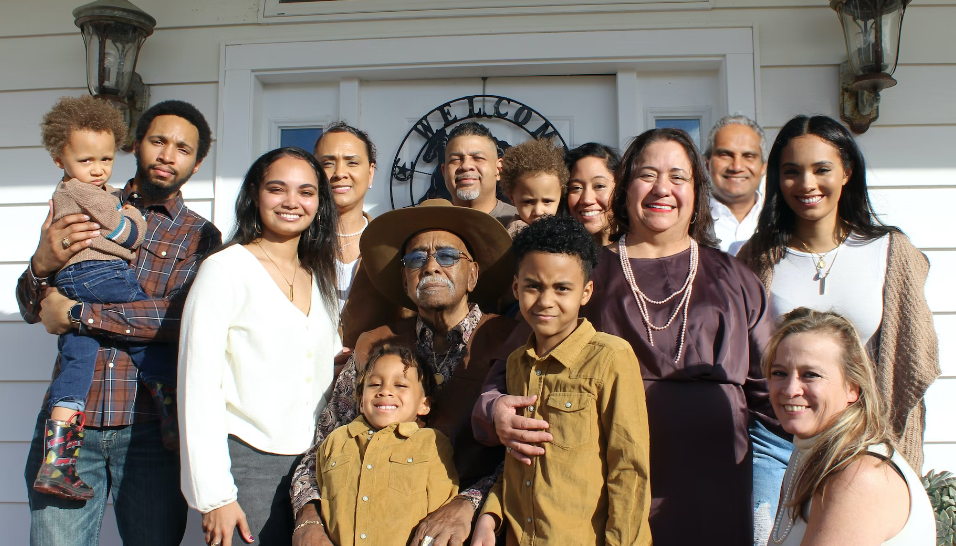Multigenerational Living: The Pros, Cons, and Solutions

© Rajiv Perera / Unsplash
With the intense market shifts in the economic landscapes and evolving family dynamics, multigenerational living has become increasingly common. No matter if this type of living is characterized by financial necessity, a desire for shared responsibilities, or the need for familial support, households that utilize multiple generations are now a significant part of the American landscape.
However, while the benefits of such living arrangements are numerous, they often come with financial challenges that can affect familial bonds. To find out more, we will dive into the intricacies of budgeting in multigenerational households and offer tips on how to navigate this financial choice the right way!
What Is Multigenerational Living?
A multigenerational household is one that accommodates two or more adult generations, such as baby boomer parents and their adult children, or grandparents living with their grandchildren. The percentage of households with multiple adult generations has been increasing since it reached a low point of 12 percent in 1980. This growth rate significantly accelerated during the 2007-2009 recession, primarily driven by high unemployment that led younger individuals, in particular, to move back in with their parents.
The question at that time was whether this trend would subside as the economy recovered, making it easier for people to live independently. However, up to now, there are no indications that this shift is diminishing.
Who Lives With This Arrangement?
The likelihood of living in a multigenerational household varies significantly based on factors such as age, race, nativity, and geographic location. Notably, gender disparities exist among young adults, who are the age group most likely to live in multigenerational homes.
While men and women have roughly equal likelihoods of living in multigenerational households overall, the pattern shifts with age. Among those younger than 40, men are more likely to live in such arrangements, while women are more likely to do so among those aged 40 and older. For instance, among 25- to 29-year-olds, young men (37%) are notably more likely to live in multigenerational homes than young women (26%). This trend is especially pronounced among a broader age group of young adults (18-34), where living with parents has been the dominant arrangement for young men for over a decade.

Among older Americans (ages 65 and up), 20% of women live in multigenerational households compared to 15% of men. This reflects a shift away from older Americans living alone, partly due to a growing number of older women living with their spouses or children.
In terms of age groups, Americans aged 25 to 39 and those aged 55 to 64 are equally likely to live in multigenerational family households (22%). However, within the younger group, those aged 25 to 29 (31%) are more likely to live with multiple generations under one roof than those aged 30 to 34 (19%) or 35 to 39 (15%). Young adults today, particularly those with a high school education, are more likely to reside in their parents’ homes for more extended periods than previous generations.
What About Different Ethnic and Racial Groups?
Regarding racial and ethnic differences, Asian, Black, and Hispanic Americans are more likely than White Americans to live in multigenerational households. Approximately a quarter of Asian (24%), Black (26%), and Hispanic (26%) Americans lived in multigenerational households in 2021, compared to 13% of White Americans.
Immigrant status also plays a role, with a higher proportion of foreign-born Americans (26%) living in multigenerational family homes compared to U.S.-born Americans (17%). This trend persists even after considering the racial and ethnic composition of foreign-born Americans, who are less likely than the U.S.-born to be non-Hispanic White.
Geographic location influences multigenerational living, with Western states having the highest prevalence (21%), followed by the South and Northeast (both at 19%), and the Midwest (14%). Metropolitan areas (19%) are somewhat more likely to have multigenerational family homes compared to rural communities (16%).
The Rise of Multigenerational Living
The number of Americans residing in multigenerational family households has significantly increased, approximately four times larger than it was in the 1970s. This growth is in stark contrast to the relatively minor increase observed in other types of households during the same period. Over the past five decades, the proportion of the U.S. population living in multigenerational homes has more than doubled.
As of March 2021, there were 59.7 million U.S. residents living with multiple generations under one roof, a slight increase from the 58.4 million reported in 2019, based on the Pew Research Center’s analysis of census data. In 2021, the percentage of the U.S. population residing in multigenerational households stood at 18%.
Pros of Multigenerational Living
Although it sounds complicated, multigenerational living can offer these positives:
Living Expenses
Forty percent of adults in multigenerational households consider financial issues as a significant factor for living with adult family members other than a spouse or partner, and an additional 28% view it as a minor factor. This pattern holds consistently across various racial, ethnic, and income groups.
Around 28% of respondents attribute their living arrangement to it being a tradition or the arrangement they’ve always had. A similar percentage, 25%, state that caregiving for an adult family member or receiving care themselves is a major motivating factor. Smaller percentages identify major reasons such as changes in relationship status (15%), seeking companionship (12%), or providing/receiving assistance with child care (12%) for their current living situation.
Caregiving
Many stated that it is the arrangement they have always had or that they are caring for an adult family member, or being cared for by one. In contrast, only a small percentage attribute their living arrangement to the COVID-19 pandemic. While most adults in multigenerational households mention caregiving as a reason, a quarter of them confirm that caregiving is currently happening in their household. This caregiving aspect is more prevalent among individuals with lower and middle incomes in these households compared to those with higher incomes.
The Cons of Multigenerational Living
The biggest drawback of multigenerational living would definitely be the lack of privacy. Sharing your household with multiple generations means that you need to find a middle and common ground with each family member. This can get quite tricky especially if there are different personalities living in one space.
Lack of privacy does not allow you to create your own sense of self and everything you say or do will be made public to the rest of the family members. That is why it is considered one of the biggest cons of this type of living.
So, What Is the Solution?
The main priority should be conducting regular family meetings, ideally on a monthly or quarterly basis, to discuss budgets and address any concerns. This way you can ensure fair allocation of bills.
Jean Setzfand from AARP warns that sharing a household may have financial drawbacks, especially if parents postpone saving for their retirement to cover other family members’ expenses. Unlike unrelated roommates who typically divide costs evenly, family members often have a more casual approach to money matters because of their familial ties.
To overcome this, Setzfand advises household members to create a list of recurring expenses such as mortgage and utilities, and agree explicitly on each person’s share. She emphasizes the importance of temporarily setting aside familial bonds when discussing the budget to ensure clarity and fairness in financial arrangements.
Would you ever try this living arrangement? Let us know below!



